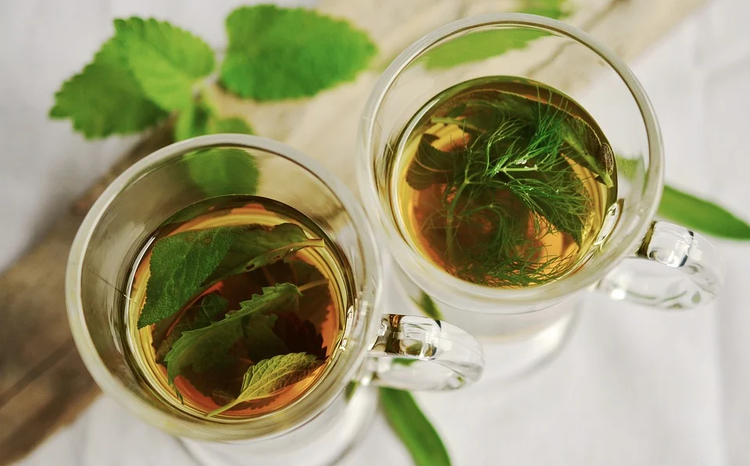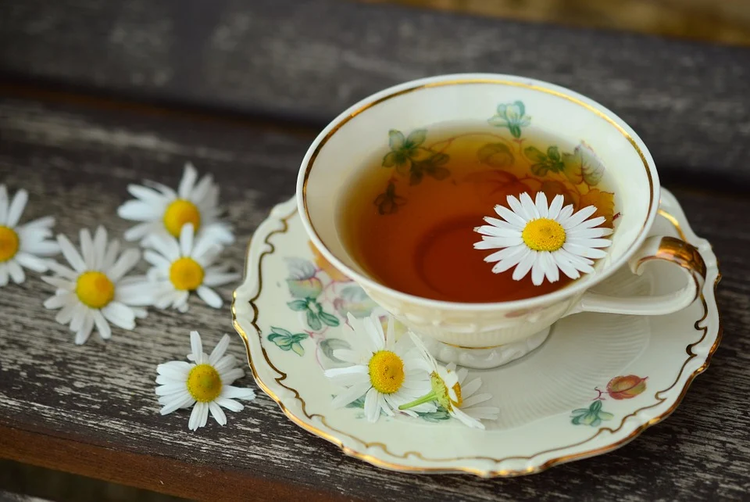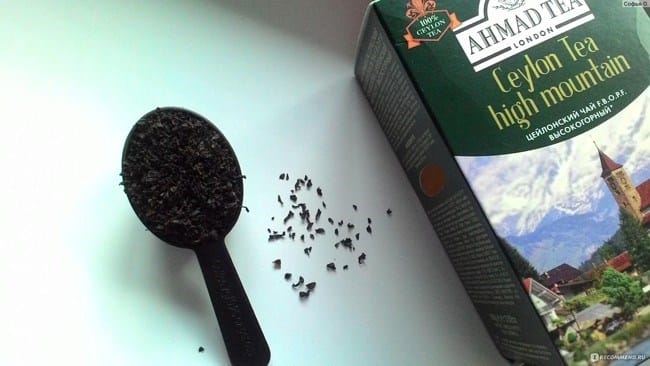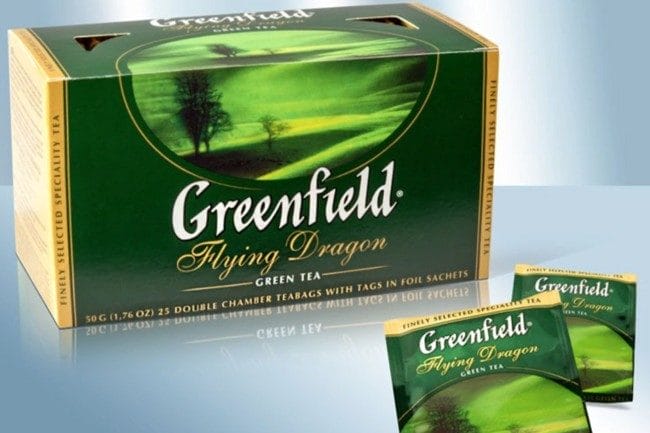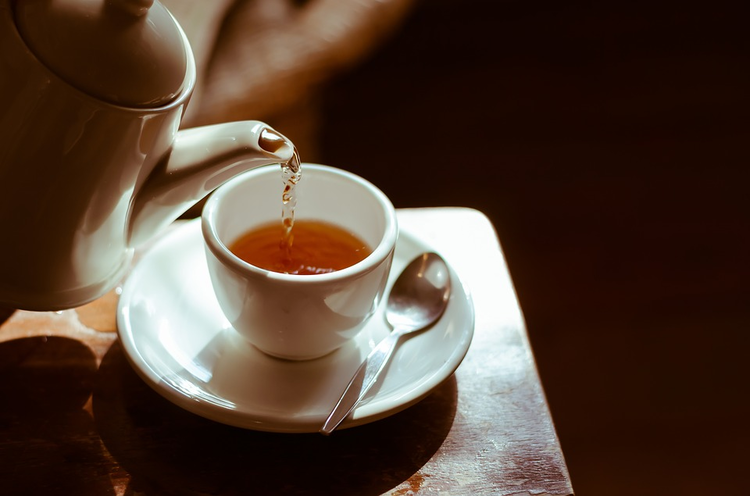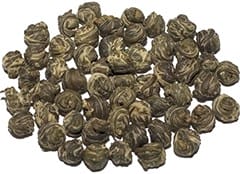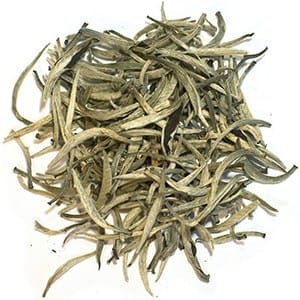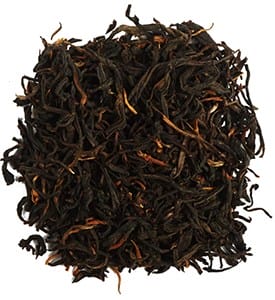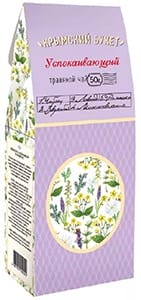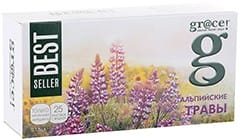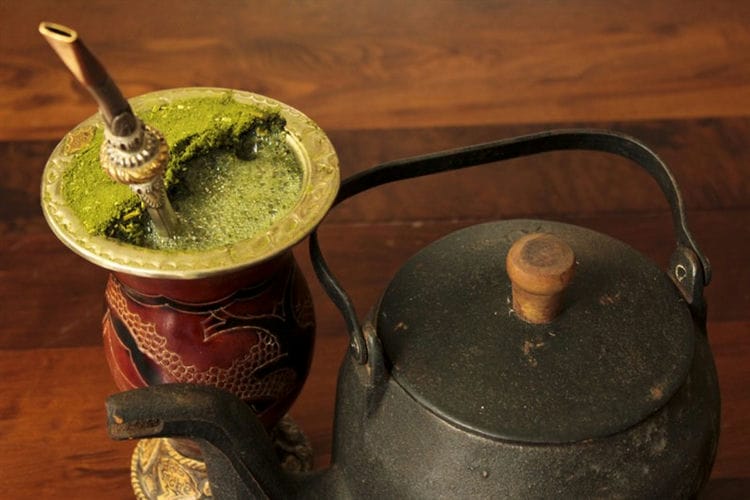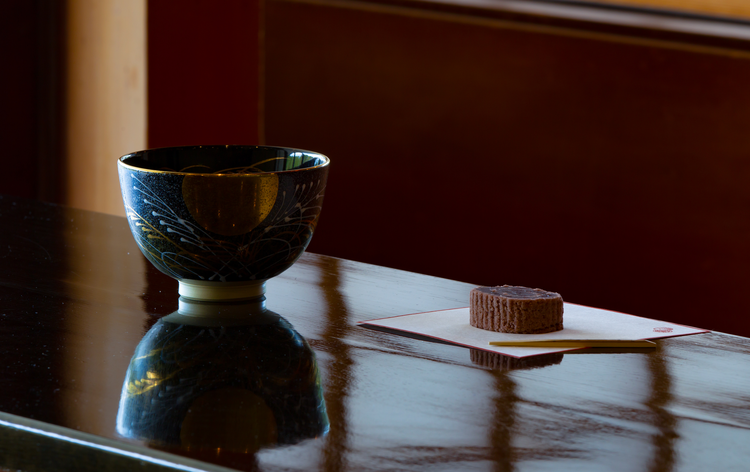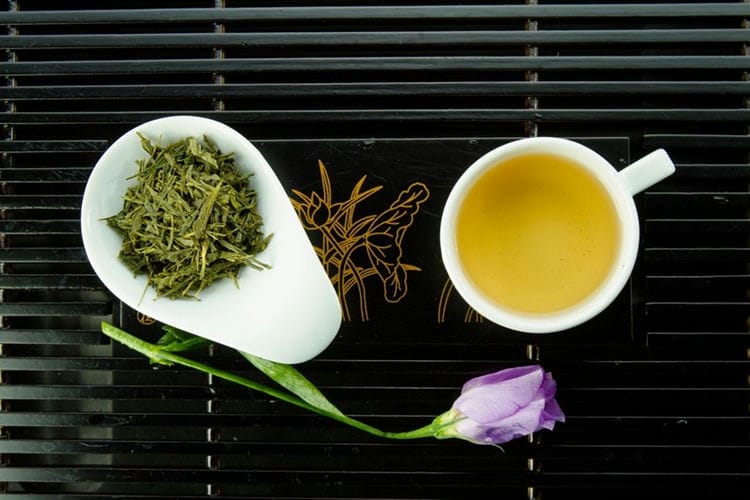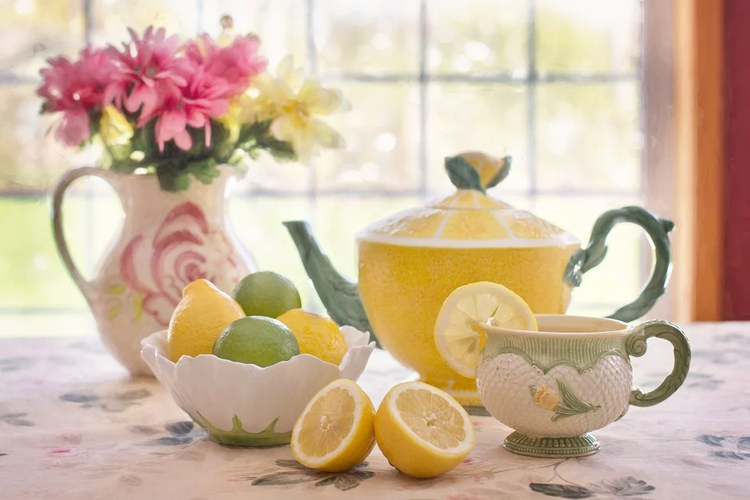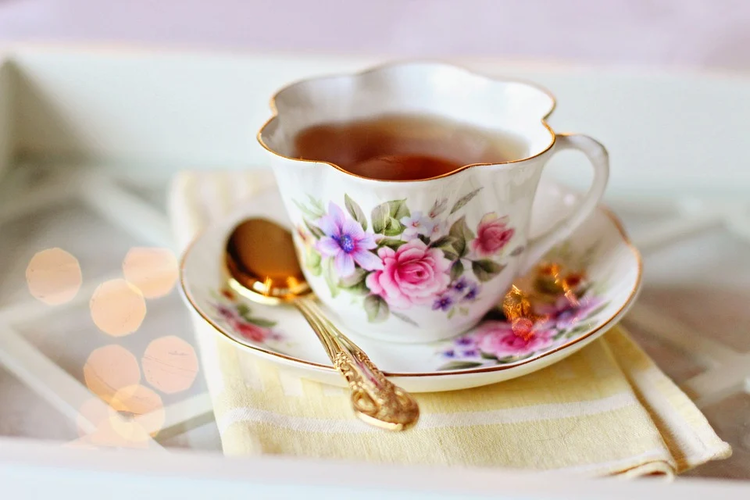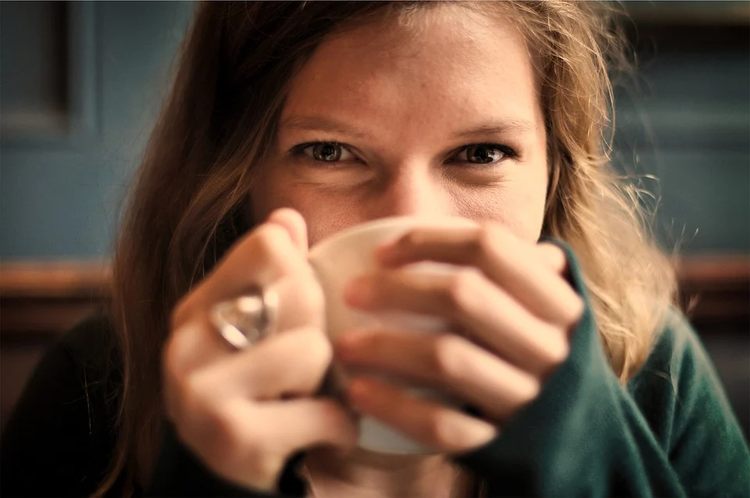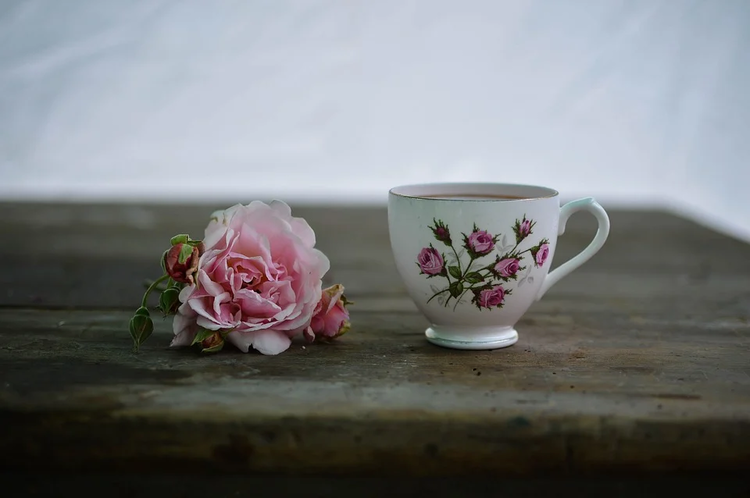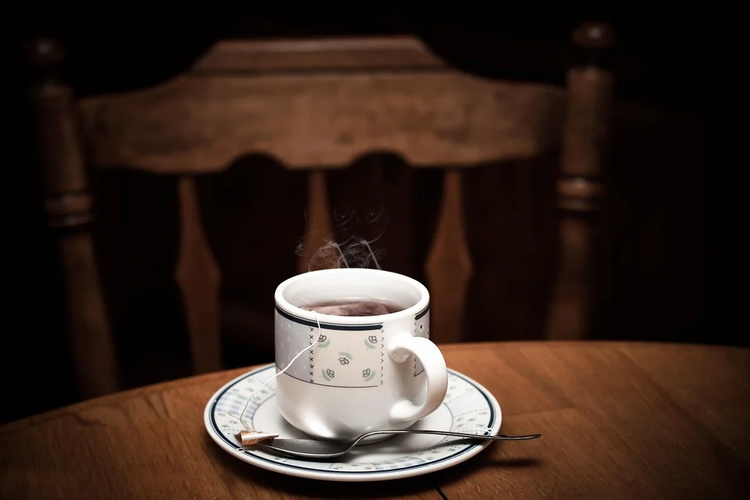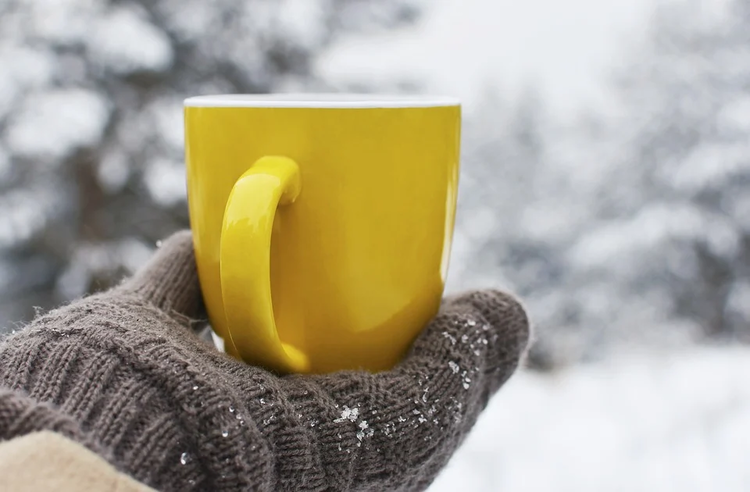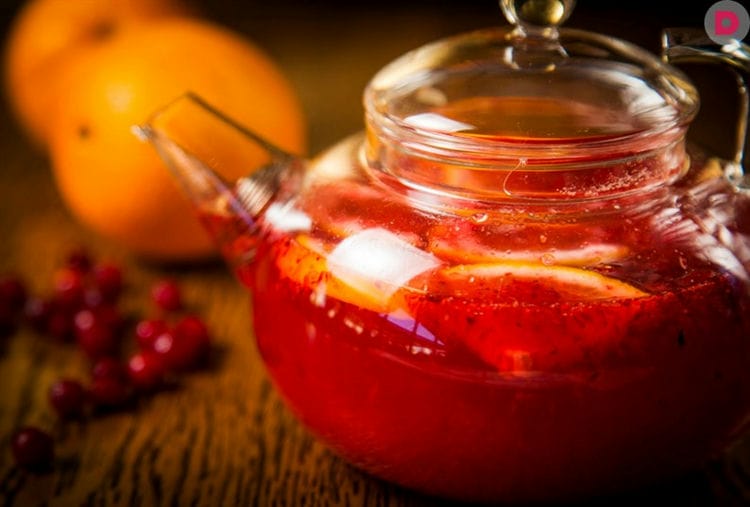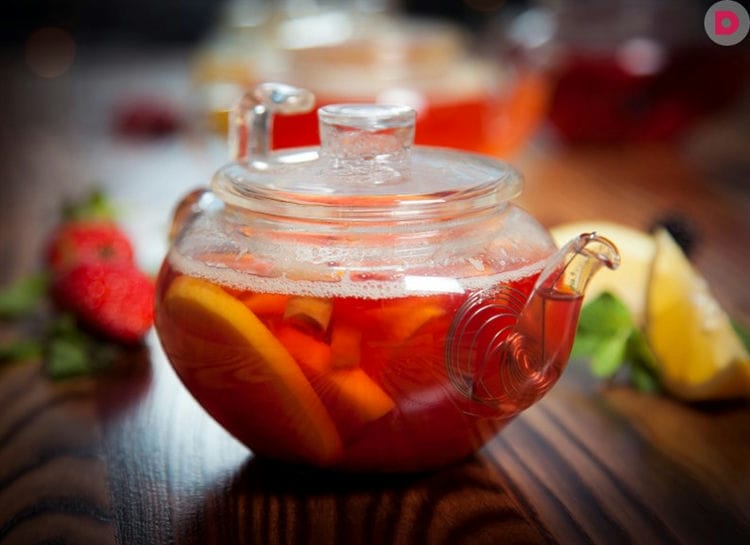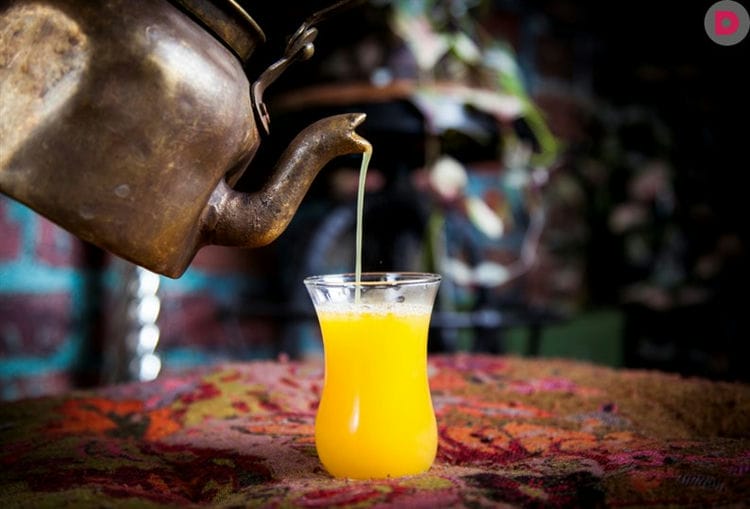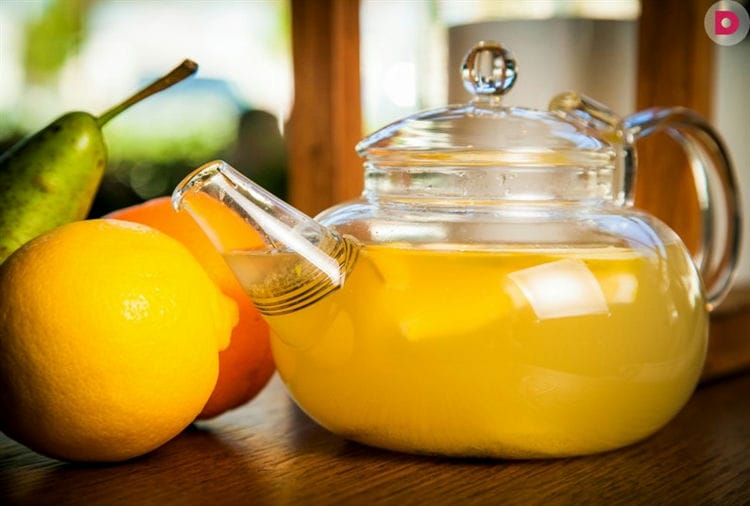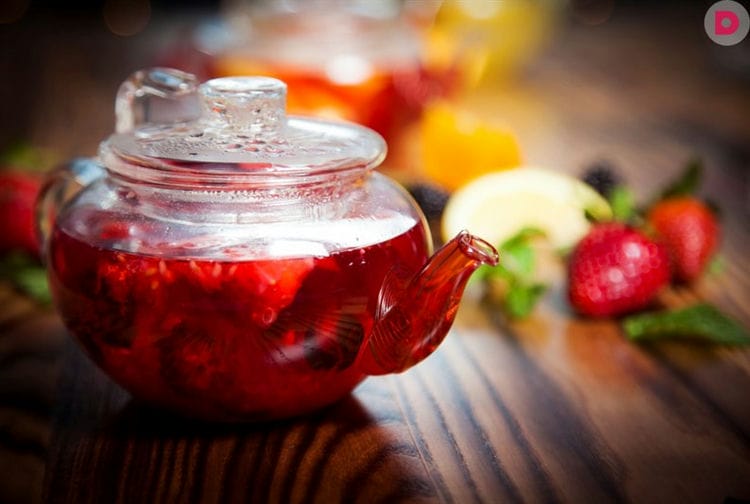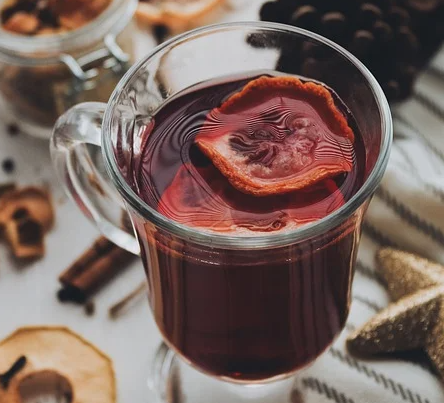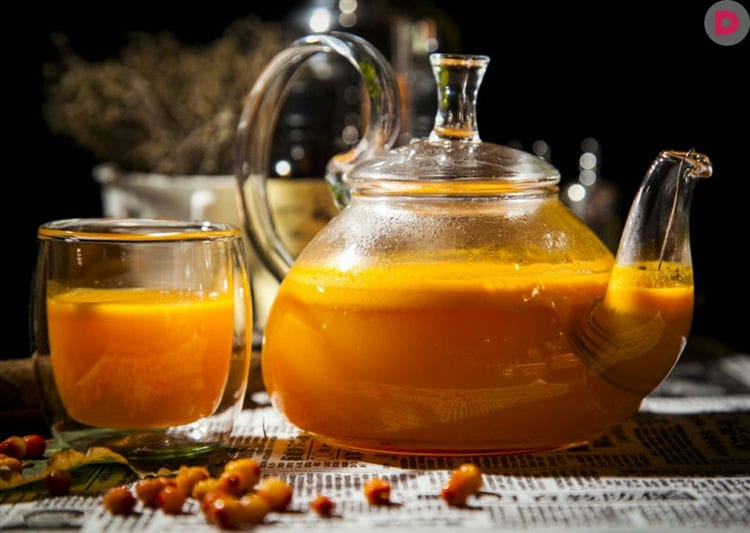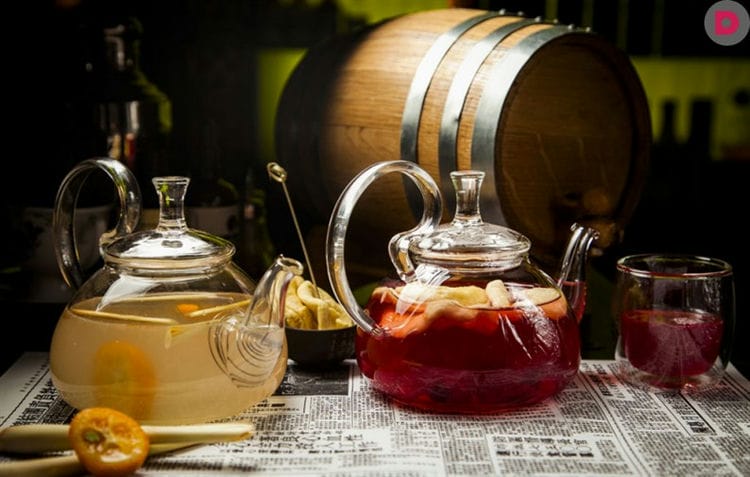How to brew tea correctly and tasty – the secrets of mastery from tea sommeliers. Herbal tea recipes for all occasions
What is tea
Tea is classified according to the degree of fermentation. There are small and high types of fermentation.
Small fermentation means:
- Green;
- Yellow;
- White tea.
High fermentation includes:
- The black;
- Red;
- Blue tea.
In addition, teas are classified by quality. There are high-grade, medium-grade and low-grade teas. High-grade teas are created from buds that are about to bloom, but have not yet had time. The first, tender leaves are also used. Medium-grade teas include varieties made from cut and broken leaves. Low-grade teas are those made from tea waste. These are usually granulated and packaged teas made in India or Sri Lanka.
Commercial grade of tea – an indicator of quality
The trade grade of tea is made up of many factors. In addition to the type of tea plant (Chinese, Assamese, Cambodian), the following is taken into account:
- the place of growth of the plant itself (this is the country of origin, the most famous are Chinese, Indian, Ceylon, Kenyan and other teas from Africa, Georgian, Vietnamese, Japanese and, of course, native Krasnodar, characteristics of the plantation ),
- time and conditions of collection (which leaves are collected, manually or by machine, harvest season, etc.),
- features of sheet processing (drying, twisting, crushing and many other special processes).
And that’s not all – many types of tea are obtained by blending and additional flavoring (there is nothing wrong with this if the flavorings are natural).
All of these factors affect the final grade of tea. As a result, we can read on the pack, for example, “Chinese green large leaf tea (… the name of the company)”. Every word counts here.
Blending is another reason for the variety of teas
Tea-packing factories are engaged in blending (or, in simple terms, blending). Each blend gets its own unique name and sometimes becomes the “face of the company”. The composition of such a mixture may include 1-2 dozen varieties of tea leaves grown in different countries.
What kind of tea is better to choose
When buying tea, always pay attention to the color of the mixture. For example, in black tea, the shade of the leaves should be as dark as possible, the presence of gray, red or light brown tea leaves indicates the low quality of the variety.
There should be no brown or whitish spots in the green. Also, the uniformity of the composition is important in it – all leaves must be of the same color.
The identical leaf size also indicates the high quality of the selected variety. The fewer small tea leaves and dust, the better. Well-rolled leaves indicate good fermentation. Strongly curled green tea is strong, straight will be softer and more aromatic.
If the mixture contains impurities in the form of sticks, branches or other debris, then this tea is not worth buying. By the way, conscientious manufacturers make a transparent window in the package so that you can evaluate the type and quality of tea.
The “age” of the mixture is an equally important criterion. The most expensive products are 1-2 months old. After six months of storage, they sharply lose in price. After a year, tea can be thrown away altogether, since the tannin is broken down in it, and the taste of the drink becomes bitter.
If the mixture is packed in a plastic bag, the aroma and taste disappear even faster.
How to choose
To begin with, it is worth deciding what kind of tea you prefer and starting from this. Someone loves green, someone red, and someone is dearer to the classic in the form of black large-leaf tea. The next link in the selection criterion is which company is better to buy? The question echoes the theme of the best manufacturers. It often happens that one company creates several different brands, for example Princess Nuri and the Grindfield brand are owned by Orimi Trade. Proceeding from this, the status of “the best producer” is rather conditional, since, in fact, it is the same for many types of teas.
The choice should be based on quality indicators, which include the place where the tea bushes grow, the time and conditions of collection, the peculiarities of leaf processing, blending and aromatization of tea.
What is the tastiest tea?
The most delicious tea for everyone will be different
Various types of tea are popular: black, green, red, white, oolong, pu-erh and others. They are made from camellia leaves, which are grown in China, India and Sri Lanka. Herbal drinks are slightly sweet in taste, have lower concentrations of antioxidants and caffeine, but have their own beneficial elements necessary for health. Black and green teas are strong and rich, have a stable color and aroma. Drinks with a high content of caffeine and tannin invigorate, tone up, fill with energy.
Delicious tea concept
Tea is one of the ancient cultures that has been familiar to mankind for many centuries. During this time, certain criteria have developed that characterize good tea:
- pure taste without artificial additives;
- bright aroma when brewing;
- various shades of taste (nutty, fruit, milk, honey and other notes that depend on the type and variety of tea);
- rich pleasant aftertaste;
- repeated brewing without loss of quality (mainly related to traditional Chinese varieties);
- positive effect on the human body (quality tea is able to improve the functioning of many organs and fight various diseases);
- tonic, invigorating or relaxing and warming effect (depending on the tea).
There is a huge variety of types and varieties of tea, and finding the most suitable one for yourself is not an easy task. True connoisseurs can spend years looking for a drink that will become truly their favorite.
Do not forget that the concept of “tasty” tea is determined not only by the above factors, but also by personal preferences.
A beginner does not have to go into the details and subtleties of the centuries-old tea culture (this is especially true for Chinese varieties). For starters, you can turn your attention to mass products that can be found on supermarket shelves.
Almost all popular brands of tea are produced by three domestic companies:
- Orimi Trade – produces brands such as Princess Nuri, Tess and Greenfield.
- May – primarily produces May Tea, as well as Lisma and Curtis.
- Unilever is an international company with production facilities in Russia. Produces Beseda, Brooke Bond, and Lipton.
Among foreign producers, the most common teas are Ceylon, Dilmah, British Twinings, Ahmad and Akbar.
All these brands have a rich assortment, and many of them produce high-quality tea.
In this video clip, Karina will share recipes for delicious and healthy tea at home.
The most delicious black tea
Among the various brands and varieties of black tea available on the market, three of the most delicious teas can be distinguished:
- Ahmad Ceylon Tea high mountain. Ceylon leaf tea with a classic taste and a bright infusion color. Perfect for morning teas. The price is 360 rubles for 200 g.
- Greenfield Golden Ceylon. Ceylon large leaf tea. It has a rich velvety taste and a beautiful red-brown color. A good option for everyday use. It costs 174 rubles for 200 g.
- Dilmah Ceylon. Ceylon large leaf tea. Has a tart taste, rich aroma and reddish color of the infusion. Price – 359 rubles for 250 g.
In stores, you can find other varieties that differ in shades of taste and aroma.
The most delicious green tea
Green tea in Russia is less popular, but lovers of this type of tea can pay attention to the following varieties:
- Greenfield Flying Dragon. Traditional Chinese green tea with mild taste and pleasant aroma with herbal notes. Has a light amber transparent infusion. It costs 174 rubles for 200 g.
- Princess Java Best. Chinese green tea with rich flavor and delicate aroma. Low cost does not mean poor quality, since tea costs only 55 rubles per 100 g.
- Ahmad Green Tea. Chinese green tea, the raw material for which was the Chang Mi variety. Differs in delicate taste and pistachio shade of infusion. The price is 265 rubles for 200 g.
In addition, there are a large number of packaged green teas on the market.
How to make tea to make it delicious
It would seem that there is nothing difficult in making tea – after all, this is an everyday action that is performed almost automatically, without hesitation. In fact, the process of brewing delicious tea holds many secrets. To find them out, you need to consider each stage in detail:
- First of all, to get delicious tea, you should choose good water. Ideally, if it is extracted from a spring or spring, but in modern conditions, you have to use tap water. This water is usually too hard, which negatively affects the quality of the tea. It is best to pass it through a filter and then boil it. As a last resort, a pinch of baking soda should be added to the water, which neutralizes salt formations.
- Next, you need to choose the right cookware. A porcelain teapot is usually recommended, but it can be ceramic or glass. It is important to know that the kettle should be warmed up before brewing. To do this, it is usually doused with boiling water.
- Welding. The most simple point, since only the leaf form of this drink is used for brewing tea. In this case, you should forget about tea bags.
- Proportions. Of course, everyone chooses the necessary strength of tea for their own taste. The standard version usually provides for this ratio: 1 tsp. tea leaves for 1 cup + 1 tsp. on the kettle itself. For example, if the capacity of the teapot is 1 liter (4 cups on average), then you will need 5 spoons of tea leaves.
- Brewing. The tea leaves are filled with water and poured with boiling water (when it comes to black tea) or water cooled to 80 degrees (for green tea). Water is poured in so much that it completely covers the tea, but makes up a maximum of ¼ of the total volume of the container. At this stage, it is recommended to twist the kettle in your hands so that the tea leaves are evenly “washed” with water.
- Next, water is poured into the kettle at the same temperature as before, filling it to half its volume. Usually it is advised here to cover the kettle with something warm, for example, a special felt or cotton nozzle. After a couple of minutes, the kettle is filled with 3/4 of water, and after another 3 minutes, it is completely filled.
A light white foam formed on the surface of the infusion will become a sign of correct tea brewing. This tea can be poured into cups and served at the table.
The best varieties of white tea
White tea is one of the finest varieties. In China, it is called the drink of immortality. For him, kidneys and upper young leaves, covered with white pile, are selected. The mixture undergoes minimal processing, due to which it retains a maximum of useful substances.
Flower of the Night – Elite White Tea
Flower of the Night is an elite variety of Chinese white tea. It is distinguished by its appearance – the leaves are twisted into small pearls that open beautifully in hot water.
To prepare this tea, the top leaves of the bushes are harvested only once a year – and only for three days at the end of May. Because of this, the price of tea is very high.
Natural blueberry oil is used as a flavoring agent, there are no synthetic additives in the composition.
The drink is rich in antioxidants and minerals, has a relaxing and immunostimulating effect. It cleanses the body, relieves inflammation. And the essential oils contained in the white villi quench thirst and refresh in hot weather.
Pros:
- delicate taste;
- pleasant aroma;
- composition without artificial additives;
- interesting appearance;
- helps relax;
- good for the whole body.
Minuses:
- difficult to find on sale;
- price (from 250 rubles for 50 g).
For maximum effect from the drink, it does not need to be diluted with sugar or something to eat. It is recommended to use it half an hour before a meal or an hour after a meal.
Bai Hao Yin Zhen – the Chinese elixir of youth
Bai Hao Yin Zhen is a variety that was forbidden to be exported from China until the 18th century. It is harvested 2 days a year in the northern provinces of the country, where a sharp drop in day and night temperatures gives the leaves a special taste. Translated, the name of this tea sounds like “silver needles”.
The variety got it due to the appearance of tea leaves – they are thin and sharp, covered with the smallest white fibers. The leaves dry naturally and heat up no more than 45 degrees. Such processing allows not to spoil the delicate taste and preserve all the useful properties.
Bai Hao Yin Zhen is approved for pregnant and lactating mothers as it does not contain caffeine. Regular consumption of the drink slows down the aging process and normalizes appetite. To get a delicious drink, you need to brew it correctly: 5-7 g of the tea leaves are poured with water at a temperature of 85 degrees. This can be done up to five times – with each next infusion, the variety is revealed in a new way.
The finished drink has a pale yellow color with an exquisite mild, slightly sweetish taste and a refined aroma with honey-fruity notes.
Pros:
- discriminating taste;
- withstands up to 5 brews;
- light, pleasant aroma;
- reduces appetite;
- slows down the aging process.
Minuses:
- many subtleties of correct brewing;
- expensive (300 rubles for 50 g).
To reveal the full aroma of Bai Hao Yin Zhen, experts recommend brewing it by spillage in porcelain or glassware. It is better to take soft water – spring water.
The best varieties of red tea
Red tea is so named for the shade of the finished drink – from amber to maroon. The technology of its production is very complicated: after drying, the leaves are curled in a special way to maximize the release of juice and impart a pronounced aroma. Fermentation in red tea is the highest, however, useful properties are not lost.
Dian Hong – a cure for inflammation
According to the European classification, Dian Hong is often referred to as black teas, but the technology of its production returns it to the ranks of red varieties. The buds and upper leaves for its production are harvested in the fall, dried, rolled and fried in a wok over an open fire.
To reveal the full range of taste and aroma, tea should be brewed with boiling water. A 10-second infusion is sufficient.
The drink turns out to be a transparent red-brown color, its taste combines fruit-honey tints, astringency, woody softness and sweetish aftertaste.
Dian Hong is especially good in winter due to its warming properties. It is often used to prevent colds. It will help those who are already ill to sweat and relieve inflammation.
You can brew the leaves up to 10 times. They drink tea in small sips. It can be diluted with milk or added with lemon, the variety also goes well with various desserts – for which it is especially loved by Europeans.
Pros:
- soft taste;
- warms;
- relieves inflammation;
- brews quickly;
- you can use one infusion up to 10 times;
- goes well with sweets or other additives.
Minuses:
- not sold everywhere.
It is important not to keep the leaves in water for too long – this makes Dian Hong’s taste bitter and astringent. The strength of the drink is regulated only by the amount of brewing.
Hong Ta is the most unusual red variety
Hong Ta or Red Pagoda is a Chinese red tea in which the leaves are tied in a special way, resembling the roof of a pagoda. It is made by hand from tea leaf buds.
It is not difficult to brew Hong Ta: one or two bundles are poured with a cup of boiling water and kept for about 2-3 minutes. The procedure is best done in a glass vessel so that you can observe the “opening” of the pagodas.
Drinking a cup of this tea helps to cope with fatigue. The tannin contained in its leaves slows down the aging of the body, normalizes metabolism and helps stabilize weight.
Regular consumption of the drink improves appetite and improves digestion. Also, the variety is indicated for hypertension. The aroma of brewed tea carries notes of dried fruits and honey. The taste of the drink is rich, slightly tart, with a long sweet aftertaste.
Pros:
- unusual appearance;
- easy to brew;
- copes with fatigue;
- improves metabolism;
- normalizes the digestive tract;
- pleasant aroma;
- rich taste.
Minuses:
- the price is 250 rubles for 50 g.
The variety has beneficial properties that aid digestion and reduce blood pressure. However, this is not a cure: tea on its own does not replace medications or proper nutrition.
The best herbal teas
Herbal tea is not only delicious, but also extremely healthy drink. Each mixture of plants has its own unique taste and aroma, among which anyone can find what they like.
Crimean bouquet “Soothing” – a popular herbal collection
Crimean bouquet Soothing – herbal mixture with rich taste and aroma. Thyme and mint are especially vivid in the collection.
Lavender, juniper and chamomile remain in the background. One bag or teaspoon of the mash is enough for a large teapot. You need to brew tea with steep boiling water; it will take 5-7 minutes to fully develop the gamut of taste.
The mixture includes thyme, St. John’s wort, chamomile, giving tea a multi-layered aroma. Lavender and juniper improve the functioning of the nervous system and normalize sleep.
The drink has a relaxing and calming effect. It does not require additions in the form of sugar or dessert – there is already a slight natural sweetness in its original taste.
Pros:
- sold in many stores;
- several formats;
- beautiful packaging;
- calming effect;
- a mixture without dust and debris;
- low price (from 60 rubles for 50 g).
Minuses:
- not everyone likes the smell.
Buyers note that the taste of the Crimean bouquet in the bags is worse than that of the loose mixture and they recommend taking packages with whole leaves.
Alpine herbs – a charge of vivacity and strength
Alpine Herbs – a blend of green and white tea with the addition of mint, lemon balm and lemongrass. The mixture is sold in bulk and in bags in ordinary cardboard boxes or tin gift wrappers.
The composition refreshes and invigorates, but does not affect the quality of sleep, so it can be drunk both in the morning and at night.
A rich herbal aroma spreads throughout the house when the amber drink is brewed. This tea can be consumed both hot and cold.
Pros:
- you can buy in bulk and in bags;
- rich aroma;
- pleasant taste;
- natural composition without flavors.
Minuses:
- not sold in all stores;
- expensive (650 rubles for 10 sachets).
Thanks to several release formats, it is convenient to drink tea at home, take it with you to work or travel.
The best teas
Natural mate
South Americans can’t imagine a day without a cup of mate. Leaves called yerba are used to make the drink. They have an oblong shape, dissolve in water close to boiling water. Rich tea with pleasant aroma and color tones up and refreshes well.
It contains a high content of vitamins of groups B and C, as well as antioxidants that serve to rejuvenate the body.
Mate is high in caffeine. It gives a charge of cheerfulness and pleasure.
Paraguayan mate drink is gaining popularity all over the world
Mate is drunk cold through a straw from a long glass. The drink has gained popularity in hot countries as it is consumed cold. Before serving, the tea is filtered so that the leaves do not interfere with enjoying the taste. The most popular varieties of Mate:
- Reserva Del Che SELECCION ESPECIAL (with stems);
- Reserva del Che Деспалада;
- Reserva Del Che BARBAQUA (stems);
- Reserva del Che Cotidiana;
- Taragui with orange.
In a tall glass with a thin straw, mate resembles a beach cocktail, from which it blows cool and fun.
Son
Oolong tea has several types
Even the name is surprising in this tea. It translates as “black dragon tea”. The drink has Chinese roots. Its assembly, drying, rolling and roasting are similar to the production of black tea. the peculiarity of oolong is that it is not fermented. In appearance, tea resembles both green and black.
There are varying degrees of fermentation from 8 to 70 percent. This affects the taste, color and characteristics of the drink.
The varietal variety of oolong allows you to make your choice:
- Milk oolong tea (Nai Xiang);
- Tie Guan Yin;
- Da Hun Pao;
- GABA Alishanya.
Among the teas, the most popular is milk oolong. It has a delicate taste and a special delicate aroma. The qualities of green and black tea in one cup create a successful quintessence of beneficial properties.
Premium white tea
White tea is a rare and expensive drink
White tea is made from young leaves and unripe buds. It does not undergo fermentation, does not roll and does not undergo the oxidation process, therefore it has a light yellowish tint. The taste of the drink is very delicate and delicate, belongs to the premium class.
Tea is known for its medicinal properties. It has a higher price tag than other varieties. There are no analogues to white tea in the whole world. Its elite variety “Silver Needle” is highly valued and expensive.
White tea contains less caffeine than green tea, but this is compensated by a higher content of antioxidant components.
The drink of youth and health conquers with its delicate taste and aroma. The most common and commonly used varieties include:
- Bai Mu Dan (White Peony);
- Yin Zhen (Silver needles);
- Bai Hao Yin Zhen
- Gu Shu Bai Ya (Yunnan Spring Buds);
- Xiaomen, Damn.
Despite the high cost, the white hour is very common. It is harvested and produced in Chinese factories near plantations, as the raw materials are fragile and delicate.
Do you think
Japanese sencha tea
Japanese sencha tea has healing properties. After assembly, its sheets are not fried, but steamed. When the oxidation process is complete, they are rolled up and dried. Young leaves turn into thin tubes, called “spider legs”. Tea leaves with valuable properties have long gone beyond the borders of Japan and spread all over the world.
The tea of the April collection has the greatest value, when the leaves are still tender and have not had time to gain bitterness.
The drink does not have a tart aftertaste typical of a later assembly. Teas from the city of Uji and the island of Kyushu have a centuries-old history. Green sencha is a good thirst quencher. It is recommended to drink it without sweeteners in order to enjoy the nuances of taste and aroma.
Large leaf black
Black tea is the most famous type of this drink in the world.
The most widespread drink in the East is black tea. Its connoisseurs around the world prefer coffee, green and white varieties. A feature of black tea is its rich color and aroma, which are difficult to confuse with other drinks. The manufacturing process consists of assembling, drying, fermenting, oxidizing, curling and roasting.
The best black teas are produced in Sri Lanka and India.
A drink with a high caffeine content invigorates and tones, it cleanses blood vessels and protects against stroke.
Research has shown that black tea is beneficial for the lungs of smokers. It helps to increase mental alertness and sharpen memory. There are many varieties of black tea. It can be large-leaf, in sachets and granules.
Ginger
Ginger tea is a storehouse of vitamins
The ginger plant is effectively used for weight loss. The drink with a sharp, burning taste warms up pleasantly and is a natural fat burner.
Ginger tea relieves nausea, eliminates inflammation, has a beneficial effect on the respiratory tract, strengthens the immune system and promotes blood circulation.
The drink has a light yellowish tint and a peculiar aroma. It is brewed from the root of the plant. Ginger tea is drunk warm and chilled with a spoonful of honey. Do not get carried away with the drink, so as not to disrupt sleep and not get digestive problems. You can make ginger tea yourself.
Chamomile
Chamomile tea is the most common herbal drink with medicinal properties.
Teas are popular not only from camellia leaves, but also from medicinal herbs. Chamomile flowers have been used for the production of a medicinal drink for centuries. It soothes and helps get rid of depression, normalizes sleep and relieves stress, and has a beneficial effect on the immune system.
Chamomile tea contains antioxidants that lower blood sugar, restore vision and heal the kidneys.
The drink has a tonic effect. Among the most commonly consumed herbal teas, chamomile takes the honorable ninth place.
Floral
Flower tea dissolves when brewed
The abundance of drinks from camellia, echinacea, chamomile and ginger complements the floral composition. Tienchi is a type of brewed ginseng native to China. The drink is not only tasty and aromatic, but also the healthiest in the world. Flower tea, which also includes the roots of the plant, helps against insomnia, cures skin diseases and dizziness.
The drink effectively removes intoxication, therefore it is useful for people associated with harmful production. The flowers are like small broccoli inflorescences, and when brewed, they bloom. Tea is highly prized in Asia. The cost per kilogram is over $ 170.
How to brew tea
Tea is a traditional drink in most modern countries. A wide variety of varieties allows you to open its taste facets from different sides and every time you can re-enjoy a mug of fragrant invigorating potion. There are many general recommendations on how to brew tea, but it is also important to follow the technology of opening the tea leaves of each variety separately.
What to look for
First, you need to learn the general rules for brewing tea:
- Use only fresh tea leaves, as with long storage it loses both its taste and its benefits. So, green, red and white varieties, as well as oolongs, must be consumed within 3-6 months after harvest. Black tea and herbal teas can be stored for up to 1 year. But pu-erh is a real long-liver and may not lose its properties for several years.
- It is correct to brew tea already during tea drinking, so as not to miss the moment of obtaining a rich, but not strong infusion, because the brewing time is only a couple of minutes.
- A delicious drink can only be obtained by using soft water. Ideally, the hardness should be no more than 1 mEq / L.
These indicators are always prescribed on the label of bottled water. If the water is running or is taken from a spring, then the hardness can be determined empirically – after boiling, no plaque remains on the walls of the kettle, and you will not see sediment in the cup. Hard water can be softened at home. There are two ways to do this: freeze it – then the excess metals will leave in the sediment, or add a pinch of salt, sugar and baking soda to it. However, when using a flow-through, it is recommended to install special filters for cleaning.
Water temperature
To get a truly delicious drink, tea must be brewed at a certain water temperature. Professionals call this process – boil water to the “white spring”, that is, wait until it is filled with oxygen. As soon as the water in the kettle begins to boil and steam appears from the spout, immediately remove it from the heat. This is an ideal state in which water resembles distilled water in its properties without salts and heavy metals.
The rules for brewing tea are not just a whim. Only if they are observed, you can get the maximum pleasure from the drink and activate the beneficial properties by awakening the tea leaves.
Optimum water temperature
It is extremely important to brew tea with water at a suitable temperature, as too cold water will not be able to release all the beneficial substances from the tea leaves, and boiling water, on the contrary, will destroy them. There is a specific water temperature for each type of tea, which will be discussed later.
In addition, you need to know how to bring the water to a boil. Experienced tea experts advise to heat the water to the state of the “white key”. This is the name of the initial stage of boiling, when a lot of bubbles appear in the water, rising from the bottom. Such water is considered the most useful because it is saturated with oxygen, disinfected and free of impurities.
Boiling water for at least 5 minutes or boiling it again will ruin the taste of quality tea, so you shouldn’t use it.
Does stiffness matter
Ideally, tea should be brewed in spring or well water, but in urban conditions you have to take what flows from the tap. Tap water is generally very hard and therefore not suitable for tea.
To soften the water, it is defended or frozen – in this case, metals and salts will leave in the sediment. In addition, a special filter can be placed on the water supply system, which will retain some of the salts.
It is believed that water hardness should not exceed 1 mg-eq / l. A convenient solution to the problem is to use bottled water, which always has an optimal hardness indicator.
Brewing utensils
Making tea correctly is not an easy task. In addition to observing the cooking technology, the quality of the dishes used for this should also be taken into account. Different countries have their own traditions, but in any case, preference is given to dishes that retain heat longer and do not enter into a chemical reaction with water.
The best choice is a porcelain or earthenware teapot. Porcelain is considered a more advantageous option, as it is able to quickly warm through and through. The Chinese, for example, approach the issue very carefully and choose special “breathing” types of clay.
The dishes should be cylindrical or spherical in shape. A tight-fitting lid with a small hole is required to allow air to enter and steam out. In the Russian tradition, teapots certainly have a silver strainer that prevents tea leaves from entering the drink.
For the tea drinking process, you will also need beautiful porcelain cups, which perfectly keep the temperature of the tea and have a beneficial effect on the senses. True connoisseurs of the drink should certainly have in their arsenal a silver spoon and a linen napkin, which covers the teapot while the brewing is infused.
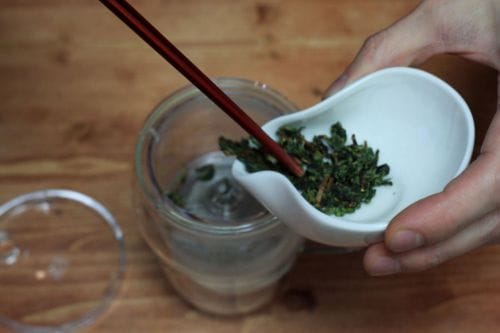
In the east, elite Chinese tea is brewed in a special flask. This is not only very convenient and protects your fingers from burns, but also allows you to make the infusion crystal clear.
The flask consists of two cylindrical vessels that are placed one in the other. The inner vessel has small holes through which the finished infusion is poured into the outer cylinder. Thus, the infusion remains inside, and the clean drink enters the cup.
So, loose leaf tea is poured into the flask. It is optimal to take no more than 7 grams. tea leaves. Try to place the tea leaves in one direction, tamping them lightly with your fingers, but keeping the integrity of the leaf. Then hot water is poured into the flask and after a couple of minutes the inner vessel must be carefully removed, allowing the infusion to flow into the outer form. The first brew must be drained, and on the second run, the drink can already be consumed. The tea is brewed in quick spills, so the process should take place in a few minutes. You can adjust the strength by increasing the holding time after the second drain. But you cannot abuse it, otherwise bitterness will appear and drinking tea will not be tasty.
Step-by-step instruction
There are general rules for preparing a high-quality tea drink, regardless of which plant varieties are used:
- Prepare the dishes – rinse the kettle, dry it, and then rinse it with boiling water to warm up its walls.
- Place the brewed tea in a bowl.
- Wait a few seconds for the tea leaves to swell a little.
- Pour warm water into the kettle, leaving 1/3 of the space free.
- Cover the teapot with a lid and warm it on top with a linen napkin.
- It’s time for insisting. Each variety has its own optimal time to saturate the water with the taste and aroma of tea. On average, the infusion time varies from 3 to 4 minutes.
- One minute after the start of brewing, add more water to the kettle and leave the tea again under the lid and napkin.
- At the end of the process, add water to the very top, thereby preventing the tea infusion from cooling.
If these conditions are met, then a foam should form on the surface of the drink. Do not get rid of it, as it contains useful essential oils. Just stir the froth with a spoon and enjoy a delicious tea.
How much black tea can you brew
The brewing time of tea can vary depending on the hardness of the water and the type of tea. The maximum brewing time is 15 minutes, the minimum is 3 minutes. Although, some of the more tender varieties can be brewed for 1-2 minutes. Teas from India or Georgia open within 6 minutes, and tiled teas in 10 minutes.
Typically, the brewing time for black tea ranges from 5-6 minutes.
How to brew green tea correctly?
Almost the entire process is similar to brewing black tea. The difference concerns infusion times and pouring patterns. You can infuse green tea for no more than 8-10 minutes. You can fill it 3-4 times. During the first pouring, water is poured in a layer of 1 cm, after 3-4 minutes the water is added to half of the teapot, after another 2-3 minutes – up to the top or up to three-fourths of the teapot, after 2 minutes – up to the top.
Important! Check out if a green drink is good for you here. And – especially important! If you are preparing to become a mother, can you drink green tea – here.
How to brew red and white tea?
There are two ways to brew red and white teas:
- Pour a double portion of red tea into a very hot dry teapot (see how to brew black tea correctly) and soak for no more than 2 minutes, then add 2-2.5 cm of water, after another minute or two add water to half of the teapot, and after another 2 minutes to the top (almost). Brewing time 4 minutes.
- Pour a triple portion of tea into a highly heated dry teapot, pour water to the top and brew (soak) for 3 minutes, during which pour boiling water over the outside of the teapot.
English connoisseurs of white tea believe that this divine drink of emperors and future babies should be brewed at a temperature of exactly 85 degrees Celsius, arguing that only in this case it will reveal all the magical power of its delicate, exquisite aroma.
How to brew yellow tea?
There is one important nuance in the correct brewing of yellow tea – a mild mode with a shortened infusion time. You can drink yellow tea immediately after the first pouring (1-1.5 minutes), then brew it again (the second pouring – 3 minutes) and again (the third pouring – 4 minutes).
Adhering to all these simple principles, you can easily prepare a tea that will not only delight you with its unique aroma and taste, but will also bring great benefits to your body.
Cooking pu-erh
Puerh is a large group of Chinese teas. They have a different form of packing – from loose to pressed into large washers.
There are two ways to prepare pu-erh tea:
- Traditional teapot brewing.
- Cooking.
The first method has already been studied in detail above, but it is worth paying attention to one nuance – the first infusions should be very short, and after 3 times the holding time must be increased.
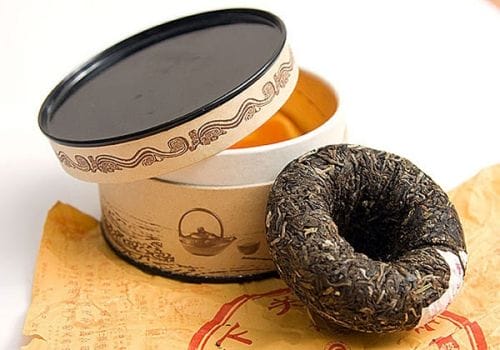
Quality pu-erh tea can be brewed up to 20 times!
For the second method, you will need any heat-resistant container, even a Turk will do. Pressed pu-erh should be pre-chopped, filled with cold water and drained after a couple of minutes. Thus, the tea leaves are cleared of dust and unnecessary impurities. Pour water into a bowl and bring it to a boil over a fire. Use a spoon to make a small funnel and pour the pu-erh tea into it. You do not need to brew tea for a long time, just let the water boil again and you can pour the drink into cups.
Mate recipe
Exotic drink mate is unique in its properties, but in order to appreciate the taste at its true worth, you will have to purchase special dishes. It is customary to drink it from a wooden pumpkin-shaped calabash through a metal tube – bombilla.
Before the brewing process, the calabash must be cleaned with boiling water. After that, the vessel is filled with mate powder to 2/3 of its volume. Cover the calabash with your palm and shake gently. Tilt the mold so that the powder is on one side, insert the bombill into the empty space and return the vessel to its original position. Fill the tea leaves with hot water at a temperature of 80 degrees up to the intersection of the mate with the bombilla. The tea leaves are infused for a couple of minutes, while it must completely absorb the water. Then pour water up to the top of the calabash. The mate can be brewed several times.
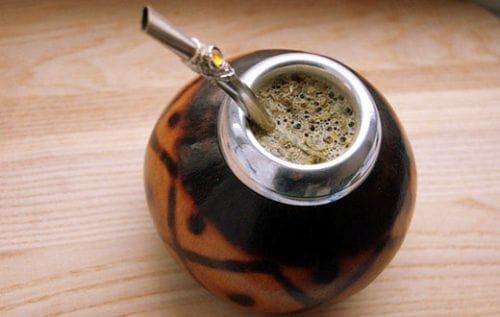
They say that the most delicious infusion is obtained after the fourth brew.
Unusual Kalmyk tea
If you are bored with the usual sorts of drink, you can make Kalmyk tea at home, which is popular in Adygea. Its peculiarity lies in the fact that the tea leaves are mixed with milk and a pinch of salt. Tea is prepared immediately in the cup, so take a larger container. Start by sprinkling in double tea leaves and pouring 2/3 cup hot water over them. Add boiled milk and a small piece of butter to the tea. Do not forget to salt and pepper the infusion a little, because this is the main highlight of this warming potion.
Brewing tea with cream or lemon
For lovers of all kinds of additives in tea, one thing can be said – this is no longer tea, but a tea drink. Because with the addition of lemon, milk, cream, honey and others, some of the properties of tea are lost. For example, if you like tea with milk, then get ready for the fact that the tea leaf loses antioxidants, which means that it ceases to be a preventive measure for oncology and cardiovascular diseases.
On the other hand, the drink takes on something new. Therefore, if you like a sour citrus flavor, then put a slice of lemon. Or a spoonful of honey, or maybe raspberry jam.
Re-brewing tea
Curiously, quality leaf tea can be brewed several times. Moreover, in Chinese and Japanese tea drinking, repeated brewing is the rule (this applies to white, yellow, green tea, as well as puerh and oolong).
It is believed that each infusion reveals the taste and aroma of the tea differently, while the general rules regarding water, amount of infusion and temperature remain the same.
There are approximate norms for the number of brews depending on the type of tea:
- green, white, yellow tea – 3-4 times;
- oolongs – 4 to 9 times;
- pu-erh – 5 to 10 times.
In addition, some quality black teas can be brewed twice.
An important feature of repeated brewing is an increase in the time of each subsequent infusion (usually 1-2 minutes are added).
Unusual tea recipes
Cranberry tea
Ingredients:
60 g orange
50 g lemon
40 ml orange juice
50 ml sugar syrup (heat 50 g sugar and 50 ml water until sugar dissolves)
50 g cranberries (frozen can be used)
1 cinnamon stick
400 ml boiling water
How to make cranberry tea:
Cut the orange into small pieces and place in the kettle with the cranberries. Add orange juice, sugar syrup and cinnamon stick. Pour boiling water over everything, let it brew for 15 minutes.
Hot Citrus Tea
Ingredients:
6 g hibiscus tea
1 wedge of grapefruit, orange, lemon
40 g honey
400 ml boiling water
How to make Hot Citrus tea:
Pour boiling water over hibiscus tea, fruit and honey in a saucepan. Boil. Pour into a kettle. Insist 2 minutes.
Tea “Transsiberian Express”
The Trans-Siberian Express is a legendary train linking Europe and Asia along the longest railroad. In honor of him, the tea is named, which combines the aromas of Asian ginger and sea buckthorn common in Russia. In addition to invaluable medicinal properties, ginger effectively fights fatigue, fatigue and stress, and sea buckthorn is an indispensable natural multivitamin.
Ingredients:
100 g frozen sea buckthorn
200 ml orange juice
40 ml ginger juice
40 ml lemon juice
40 ml honey
How to make Transsiberian Express tea:
Mix everything, heat up to 60 ° C. Tea is ready!
Apple-vanilla tea
Ingredients:
100 g apple
100 g pear
60 g orange
50 g lemon
1 cinnamon stick
50 ml vanilla syrup (can be replaced with vanilla sugar, to taste)
400 ml boiling water
How to make apple vanilla tea:
Cut the fruit into cubes and place in a teapot. Add vanilla syrup and a cinnamon stick, pour boiling water over everything and let it brew for 15 minutes.
Tea “Berry Mix”
Ingredients:
10 g of strawberries, raspberries, blackberries and blueberries (if there are no fresh berries, you can safely replace them with a frozen berry mix)
40 g of honey
400 ml of boiling water
How to make Berry Mix tea:
Mash the berries, pour boiling water over, add honey and mix. Bring to a boil in a saucepan. Pour into a kettle. Insist 2 minutes.
Non-alcoholic mulled wine
Ingredients:
300 ml cherry juice
40 ml currant syrup
40 ml honey
cinnamon, cloves, star anise –
4 wedges of apple, orange, lime and lemon to taste
How to make non-alcoholic mulled wine:
Pour cherry juice and currant syrup into a saucepan with fruits, add spices. Heat up. Pour into a jug, garnish with an apple, star anise and a cinnamon stick if desired.
Tea with sea buckthorn and quince jam
Ingredients:
120 g frozen sea buckthorn
30 g quince jam
20 ml pear syrup
30 ml passion fruit puree (optional)
6 g Ceylon tea
350 ml boiling water
How to make tea with sea buckthorn and quince jam:
Prepare sea buckthorn puree: boil frozen sea buckthorn with sugar and rub through a sieve (we need 70 ml of puree). Add sea buckthorn puree, quince jam, pear syrup, passionfruit puree, Ceylon tea and boiling water to a saucepan, bring to a boil and strain into a kettle.
Chamomile tea with elderberry and cranberry
Ingredients:
500 ml of water
50 g of dried apples
100 g of cranberries
25 ml of elderberry syrup (don’t be alarmed, it is sold in pharmacies!)
5 filter bags of chamomile tea
prunes, cranberries, dried apples – for serving
How to make elderberry and cranberry chamomile tea:
Boil dried apples in a saucepan, add cranberries, elderberry syrup, bring to a boil and remove from heat. Throw filter bags into the same saucepan, brew. Cool and drain. Reheat before serving. Serve in a teapot with prunes, cranberries and dried apples.
“Secret Ingredient” – Tea Supplements
Healthy and tasty tea can be improved with additives that make the drink more fortified and flavorful:
- Jasmine – added to green varieties and blends. Strengthens the immune system, calms the nerves, gives aristocracy to the taste.
- Rose, suitable for red and green teas. It has antiviral properties, helps with insomnia, fights depression.
- Thyme – useful for thirty-three diseases, increases immunity, regulates heart activity, normalizes the digestive tract, gives tea a delicate magical aroma.
- Mint – soothes the nerves and refreshes in the heat.
- Bergamot – will reduce the effect of caffeine, the temperature for colds, give the drink a spicy aroma.
- Rosehip fruits – fill the drink with vitamin C, help relieve high fever in case of colds and viral infections.
- Sea buckthorn berries – the leader in the content of trace elements and vitamins, is useful for high blood pressure and heart disease.
- Cranberry – will help with vitamin deficiency, colds and blood diseases.
- Lingonberry – the tart shade of its taste makes the tea refreshing and invigorating, the berry is rich in vitamins and microelements, since ancient times it has been used in Siberia as a remedy for recovery after serious illnesses, wounds and bleeding.
And also the composition of tea blends can include pieces of citrus peel, dried berries – garden and wild, herbal additives.
Attention! It should be remembered that tea additives are not the main ingredient of the drink, they should not interrupt the taste of the tea, their function is to emphasize and improve the aroma of the tea leaf.
The golden rule of tea
Interestingly, tea can both energize and soothe.
Remember the three magic numbers: 2-5-6, they will help you drink tea correctly.
The calming effect of the tea occurs 2 minutes after brewing, the exciting one – after 5 minutes, but just a delicious drink with a weak aroma – after 6 minutes (this is exactly how much time the essential oils evaporate).
The balanced and beneficial properties of tea manifest themselves in full only 15 minutes after brewing, some medicinal (for example, antimicrobial) can manifest themselves after a while, but after 7-8 hours they finally turn into either a “special tool” or a real poison!
Conclusion
To enjoy the preparation of a drink, you need to approach the process with all scrupulousness: purchase the necessary utensils, follow the rules of a traditional ceremony. But in everyday life, it is enough to know how to make freshly brewed tea and strictly follow the instructions. Only in this way will the leaves fully open, give up all their useful substances and give a wonderful aroma.
Sources used and useful links on the topic: https://vyborok.com/luchshie-sorta-chaya/ https://www.expertcen.ru/article/ratings/luchshie-sorta-chaya.html https://vyboroved.ru / reyting / luchshie-sorta-chaya https://zavarka.life/sorta-chaja/rejting-sortov.html https://prochayok.ru/interesnoe/vkusnyj-chaj.html https://kofechay.com/prigotovlenie/ kak-zavarivat-chay https://prochayok.ru/interesnoe/kak-zavarivat-chaj.html https://zavarka.life/recepty/zavarit-chai.html https://volshebnaya-eda.ru/kulinarnyj-klass / kak-prigotovit / kak-pravilno-zavarivat-chaj-instruktazh / https://adella.ru/home/gotovim/kak-pravilno-zavarivat-chaj.html https://domashniy.ru/eda/za_chaem_ne_skuchaem_10_recehv_gory https://SpecialFood.ru/sf-sovety/pravilnoe-pitanie/kak-pravilno-i-vkusno-zavarivat-chaj-sekrety-masterstva-ot-chajnyx-somele/ https://www.rusteaco.ru/tea- coffee / kak-zavarivat-chay / kak-pravilno-zavarivat-chay-vse-pravila-i-nyuansy-zavarivaniya /

